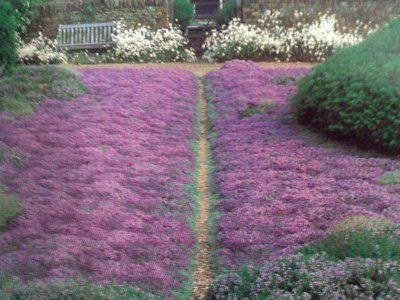What Is That Purple Flower Weed On Lawn?
Last Updated on September 8, 2021 by Duncan
In their right place, pink flowers are beautiful, but when they grow on your lawn, they are weeds as they interfere with your lawn. After all, the lawn is supposed to be green and lush.
Has the purple weed encroached on your lawn, and you are wondering what is that purple flower weed on lawn? Well, there are many purple weeds that might be ruining your lawn. They include:
Wild violet
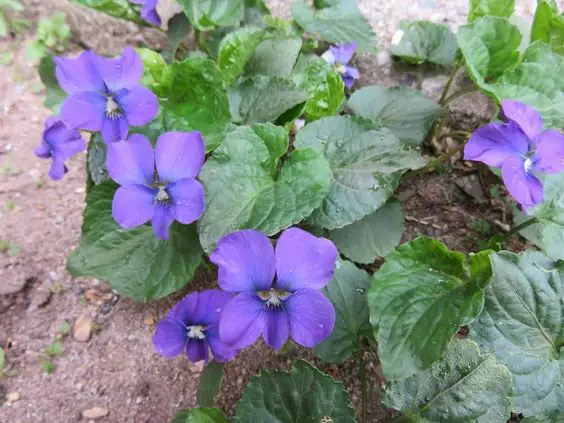
Identified by its low-growing, heart-shaped leaves that cup inwards, forming a funnel shape, wild violet is one of the most popular purple weeds that you can find on your lawn.
Where does it grow?
This perennial plant prefers poorly maintained lawns, with particular reference to the shady areas of the lawn.
The plants love growing in clumps, and they often achieve a height of 4-6 inches, although they can sometimes grow taller.
They tend to spread prolifically where they spread in two main ways: from seeds and rhizomes.
Seeds form in low-bearing flowers that don’t open, and they are carried by wind or rainfall and can end up anywhere on your lawn.
The plants also grow from rhizomes, and they can be problematic to get rid of. The rhizomes store water so that the plants can survive drought and other tough weather conditions.
How do you control wild violet?
There are many ways to control weed.
Create the right environment for grass to thrive: One of the ways of creating the right environment is by maintaining a dense, vigorous stand of grass that favors the grass on your lawn.
When the lawn is thick and healthy, the deep grassroots prevent the wild violet from finding foot on the lawn. One of the things you should do is decrease shade on your lawn and reduce the soil moisture.
Increase your mowing frequency: The more you cut the wild violet, the more you reduce the chances of seeds forming hence the higher the chances of getting rid of the weed. Although, mowing will reduce the plants’ population, the chances are that it won’t eradicate it.
Some of the wild violets also tend to adapt to the regular mowing by growing short so that they can dodge the mower blade, which gives them time to develop and disperse weeds, making them even harder to eliminate.
Herbicides: Although, there isn’t a herbicide specifically made to kill wild violet, a number of broad-spectrum herbicides have been found to be highly effective. For the best outcome, use herbicides containing pyridine chemistry such as fluroxypyr and triclopyr.
When it comes to application, ensure that you apply them in the fall and spot treat each wild violet. The purpose of doing this is to ensure that the herbicide goes straight to the taproot and kills the plant.
Remove the wild violets by hand: If most of the wild violets on your lawn are young, you can remove them by hand. Grasp the main stem near the soil line and pull the plant right up. The cool thing is that most young plants have shallow root systems to come out of the ground with ease.
If the wild violet has already established itself and there are established clumps, use a garden fork to dig under the plant to loosen the soil around it. You should then put the garden fork beneath the plant and lift it to remove as much of the root system as possible.
After uprooting, dispose of them far away from your lawn as they can germinate again, rendering your efforts useless.
How to get rid of wild violets organically.
If you don’t want to use herbicides either because you don’t want to harm your lawn or yourself, there are several organic ways you can go about it.
One of these ways is using vinegar. Like with herbicides, you need to spot apply the vinegar to the specific wild violet. This is because vinegar is non-selective, and applying it haphazardly to the entire lawn, you end up damaging your grass and other plants growing there.
For the best outcome, apply vinegar on a warm sunny day. Expect to apply it repeatedly to get rid of the weed completely.
Lime is another excellent wild violet killer. The wild violet loves acid soil, so to discourage its growth, apply lime to the soil and raise the soil pH.
Creeping Charlie
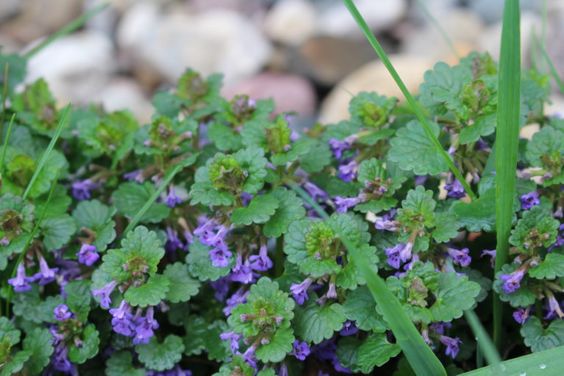
Also known as creeping Jenny, ground ivy, or gill on the ground, creeping Charlie is one of the most difficult weeds to get rid of from your lawn.
Introduced to America by the early settlers who thought it to be a good groundcover for shade, creeping Charlie features bright green, round, or kidney-shaped leaves with scalloped edges produced opposite each other on the square stem.
In spring, small, bluish-purple, funnel-shaped flowers bloom, giving your lawn the purple color you are looking at.
Where does it grow?
Creeping Charlie thrives in a moist, shady spot such as under trees and shrubs. Since its part of the Mint family, this perennial weed spreads on top of the soil via stolons (surface roots) and regrows from small pieces of vegetation left behind in the soil after removal.
Since the weed is highly adaptable, you will find it almost everywhere. You will find it in a lawn with thin grass, in compacted soils, weedy sites, and even in shady locations.
How do you discourage it from growing in the first place?
Before we move to getting rid of the creeping Charlie, we need to know how to discourage it from growing in the first place.
The weed prefers poorly maintained lawns, so the first thing you should do is take good care of your lawn. Plant the right grass variety, fertilize the lawn, and water it appropriately, and you will have a healthy lawn with strong roots that the weed won’t have a footing.
How do you get rid of creeping Charlie from your lawn?
If the weed is already growing, you should move with haste and remove it as soon as possible. How do you do it? The beauty is there are many ways to go about it. Some of these ways include:
Hand pull creeping Charlie
If only a small area is infested, one of the most viable ways to remove the weed is hand-pulling it. After uprooting the plants, remember to remove them from the lawn so that they don’t re-root.
If you have a large lawn and heavily infested, hand pulling each weed isn’t a viable solution. In such a case, use a dethatching tool such as a power rake or vertical mower.
The dethatching tool makes small cuts in the soil, and the weed roots, and all you need to do is comb out the weed with a rake.
While this is a viable solution, you should be cautious when using it as it can spread the nodes to the other areas of the lawn and introduce the weeds in areas where they weren’t before.
Dethatching also cuts out some grass, so you may have to reseed the lawn after dethatching.
Getting rid of creeping Charlie using herbicides
Getting rid of creeping Charlie using herbicides is the best way of going about it. Although creeping Charlie is considered a broadleaf weed, it’s not affected by all broadleaf herbicides, so you should be cautious of the herbicide you use.
The best herbicide to go for is one containing a salt of dicamba or triclopyr. When making the purchase, check the ingredient list and ensure these ingredients are present.
When it comes to application, apply the herbicide when the weeds are actively growing. This is usually mid to late autumn after the first frost.
At this time, most of the plants are sending the food reserves to the roots, so the herbicide is moved down to the roots, making its control easier.
For the best outcome, make the applications when the temperatures are in the mid-60s to low 80s, and there is no rain expected for the next 24 hours after application.
How to get rid of creeping Charlie with borax
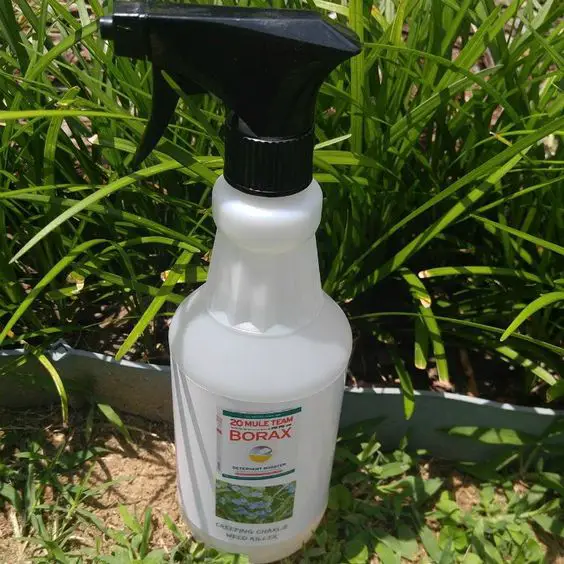
When people don’t want to use herbicides on their lawns, they run to borax as an organic alternative. Borax works by adding boron to the soil, and since creeping Charlie is highly sensitive to boron, the increased supply kills it.
While borax works at getting rid of the weed, you should be cautious when handling it, as plenty of things can go wrong. For one, it’s not only creeping Charlie that is sensitive to boron—grass and other plants on the lawn are also sensitive, so using high concentrations of borax can end up damaging the entire lawn.
Boron’s availability in the soil depends on the soil type and pH, so it’s difficult to determine the amount of boron you should apply in any area. Unfortunately, there is little room for error. Apply too little boron, and you won’t kill the creepy Charlie. At the same time, apply too much boron, and you kill even the grass.
Before using borax on your lawn, undertake a soil test to determine the amount of boron you can apply. It’s also wise you work with a professional that knows what they are doing. You wouldn’t want to damage a lawn that you are trying to protect, would you?
Purple deadnettle
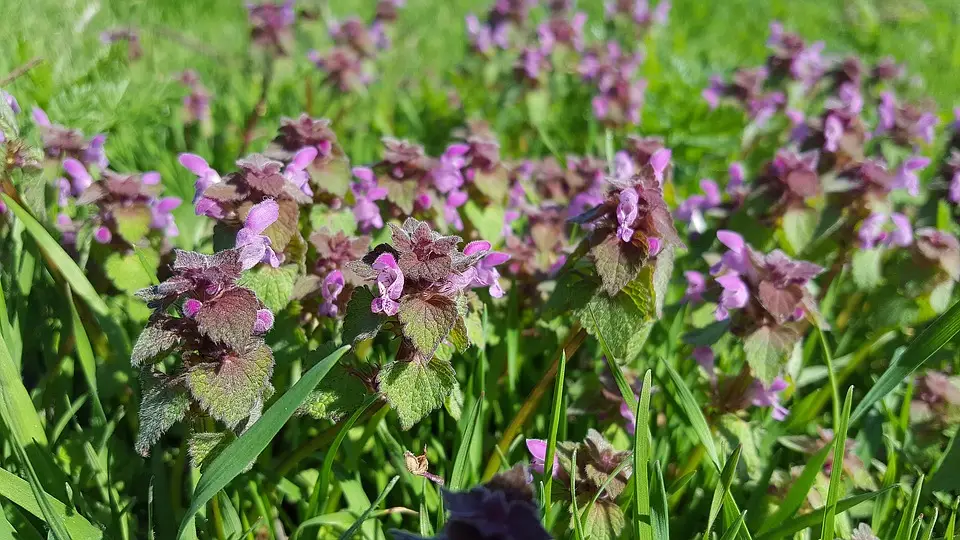
Also known as the red deadnettle, the purple deadnettle is another annual weed belonging to the mint family hence its pest nature. Like other mints, the purple deadnettle is highly aggressive, and when you don’t remove it fast enough, it spreads like wildfire.
You will recognize it and its cousin henbit by its distinctive square stems. The flowers are purple in color, small, and tubular in shape. The leaves are triangular with hollow lobes, with the upper leaves being more purple-red in color than the lower leaves.
Where does it grow?
The dead nettle thrives in moist soils and full sun to moderate shade. When you don’t stop it, it quickly spreads throughout the lawn, forming patches during periods of cool weather in early to mid-spring.
The plant is classified as a winter annual. The young plants emerge in fall after seed germination, live through the winter as seedlings then grow and mature rapidly during early spring.
Dead nettle is most conspicuous in April when it begins to produce the characteristic pinkish-purple flowers. The flowers produce seeds in late spring, when the plant begins to wither and die back as the temperatures rise in early summer.
How do you get rid of it?
Like the other weeds we have looked at above, there are plenty of ways you can get rid of the purple deadnettle. Some of these ways include:
Growing a thick, healthy lawn: This is probably the easiest way to control this weed. When you plant grass in the infested areas, the grass will compete with the weeds for nutrients and growing space, controlling the population.
As a rule of thumb, plant grass compatible with the growing conditions in your area. Also, take good care of the grass by fertilizing, watering, and doing all the right things that keep it growing healthily so that it chokes out the weeds.
Hand weeding: Do you have just a few weeds infesting your lawn? You can easily pull them out with your hands. If dry, water the soil, firmly grasp each plant at the base, and pull it out with its root system intact.
You should then collect all the purple deadnettle parts, place them in a plastic bag, and dump them in the trash.
Mulches: If you have areas on your lawn that have been infested for years with the weed, you can prevent seed sprouting using organic mulches. Purple deadnettle doesn’t regrow from the roots, but it sprouts every year from seed.
If the area in your lawn has had a long-term infestation, the soil is most definitely filled with seeds, ready to sprout. To stop the sprouting, remove the purple deadnettle plants, then cover the soil with mulch. When you exclude the light, the seeds won’t sprout hence killing the weed.
Some of the best mulches to use include: shredded bark, wood chips, garden compost, and other organic matter. Organic mulch tends to thin out with time so remember to top it up regularly.
If you don’t have access to organic mulches, you can use inorganic mulch such as pebbles and gravel. Begin with removing all the purple deadnettle plants and spread landscape fabric over the bare soil. Take caution not to let the fabric touch the plant stems, as this can bring about rotting.
You should pull up the purple deadnettle plants that appear in the bare soil around the plant bases and any plants that sprout on the mulch surface.
Herbicides: If the purple deadnettle’s infestation is large that you can’t remove the plants by hand, you should try getting rid of the weed using herbicides. One of the best herbicides to go for is glyphosate.
For the best outcome, spray the herbicide when the weeds are actively glowing—usually in the spring if you live in the cold climates and spring and fall if living in the mild zones.
You should note that herbicides control the living plants—they don’t affect the seeds, so spread mulch to control the seedlings after applying the herbicide.
Henbit
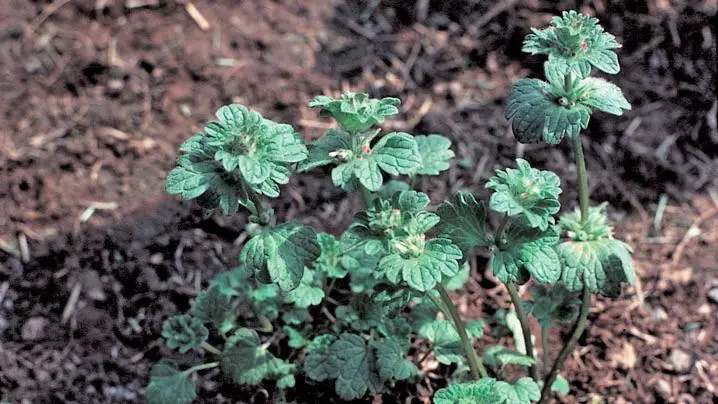
It’s a close cousin of the purple deadnettle. In fact, if you aren’t keen, you can’t tell the differences. The two differ in various ways, but we aren’t going to dwell on that now.
Henbit got its name because chickens love picking on it, and it’s considered a winter annual.
The seeds sprout in the fall or early winter, then during any short period of warm weather throughout the winter months, the young seedling will grow then go dormant when the cold weather creeps in.
When the temperatures begin to rise in the spring, the henbit will grow vigorously, and you will start noticing it in your lawn. The flowers will form in mid-spring (reddish-purple flowers), then the henbit plant will produce seeds and die in the early summer as the temperatures become hot.
Where does it grow?
You will find henbit under trees and shrubs where the grass has a hard time growing. Henbit will rarely grow in a healthy lawn, so if you have purple flowers on a thick, healthy lawn, the chances are high that you aren’t dealing with a henbit problem.
How do you get rid of henbit from your lawn?
To have an easy time controlling the weed, attack it before it flowers. This will prevent it from producing and releasing seeds, and all you will have to deal with is the actual plant.
If you dilly-dally and wait after the flowers, you might be looking for a problem that will take you years to get rid of.
Controlling henbit with herbicides: Apply a broadleaf herbicide in the spring, then follow up with water to activate the formula.
Controlling henbit manually: If you have the weed in only a small area before henbit begins to flower, pull it by the base in a smooth motion so that you remove everything, including the roots.
If you are late and the weed has already formed flowers, apply a layer of organic mulch over the soil to prevent the seeds from sprouting. You can use either organic or inorganic mulch.
Can you prevent henbit on your lawn?
Yes, since henbit prefers growing in moist soils in the shade, one way to prevent it from growing in the first place is taking good care of the grass. If you can get rid of the bush growing around your grass, go ahead and do it.
You should then plant grass that does well in the shaded areas. As you can tell, when you have grass in the shaded areas, there will be no henbit.
When the purple weeds aren’t too bad
We have been talking about how to get rid of the purple plants growing in your lawn, but it’s not all doom and groom. Sometimes these plants grow in strategic areas of your lawn that improve the lawn’s appeal.
You should weigh the pros and cons of removing them and go with the best option. For example, while they might look great on your lawn, the plants can spread to the other parts of your lawn and in no time take over your beautiful lawn. Should you remove them? It’s up to you.
